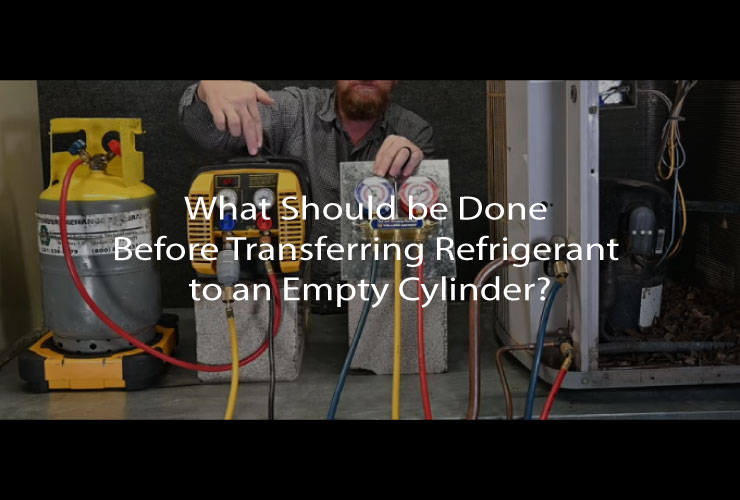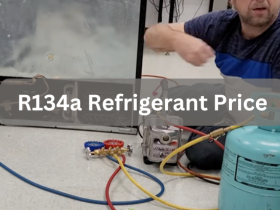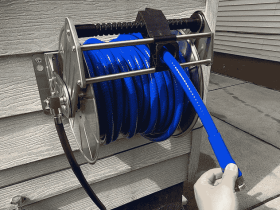What should be done before transferring refrigerant to an empty cylinder?
a. The cylinder should be evacuated.
b. The refrigerant should be mixed.
c. The cylinder should be heated.
d. The refrigerant should be chilled.
Answer: Before transferring refrigerant to an empty cylinder, the cylinder should be evacuated. Therefore, the correct answer is option a. The cylinder should be evacuated.
Why should the cylinder be evacuated before transferring refrigerant to an empty cylinder?
The cylinder should be evacuated before transferring refrigerant to remove air, moisture, and non-condensable gases. This ensures the refrigerant remains pure, prevents contamination, and avoids damage to the HVAC system.
Read more:
1. Refrigerants: What They Are, Types, Refrigeration Cycle, and Their Environmental Impact
2. What is R-134a Refrigerant? Exploring Its Properties and Potential Risks
3. What Must be Done to the Refrigerant that is Vented off the Top When Filling a Charging Cylinder?
4. How Can You Speed Up the Removal of the Refrigerant Charge from a System?
5. How Can You Speed Up the Removal of the Refrigerant Charge from a System?
6. Where Does Refrigerant Go After it Leaves the Purge Unit of a Low-Pressure Centrifugal System?
7. Before Beginning a Refrigerant Recovery Procedure, It is Always Necessary to;
8. A Very Large Refrigerant Leak Can Cause Suffocation Because Refrigerants;
9. When Recovery is First Started, at What Phase is the Refrigerant Removed to Save Recovery Time?
10. What Must be Done After Recovering the Liquid Refrigerant From a Low-Pressure Chiller?
11. Which Hydrocarbon Refrigerant is Approved for Retrofit Into Existing Household Refrigerators?
12. Where Must You Connect a Hose in Order to Recover Liquid Refrigerant?











Leave a Review